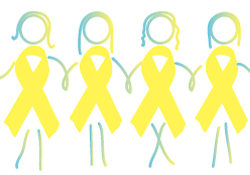March isn’t just about Leprechauns
 While some people think of March as a time to celebrate St. Patrick’s Day, teen girls and women with endometriosis are hoping to raise awareness about this unpredictable disease that affects approximately 5 million women in the United States alone. It is estimated that about 6% to 10% of women of reproductive age have it. However, these numbers don’t include the teens and adult women who go undetected because they don’t have symptoms yet have extensive disease. Without treatment, endo can spread causing chronic pelvic pain and fertility problems.
While some people think of March as a time to celebrate St. Patrick’s Day, teen girls and women with endometriosis are hoping to raise awareness about this unpredictable disease that affects approximately 5 million women in the United States alone. It is estimated that about 6% to 10% of women of reproductive age have it. However, these numbers don’t include the teens and adult women who go undetected because they don’t have symptoms yet have extensive disease. Without treatment, endo can spread causing chronic pelvic pain and fertility problems.
It’s a fact that women who have endo often disclose that their symptoms started when they were young, soon after they began to menstruate. The most common symptoms are severe period cramps and pelvic pain that can come before, during or after a period that may or may not be predictable. Some woman may also have pain with exercise, sex and/or with a pelvic exam. Although not as common, other symptoms may include frequent urination, diarrhea, constipation or both. Pain can be so debilitating that getting through school or work can seem impossible. Surprisingly, the amount of pain a woman has doesn’t have anything to do with the amount or the extent of the endo, and currently there is no cure. Treatment includes medication and surgery and some women find complimentary therapies such as acupuncture, massage, bio-feedback, and yoga, helpful.
If you or someone you know has symptoms of endometriosis, take the time to get checked out by a health care provider. Early treatment can help manage pain, improve a person’s quality of life, and preserve fertility.
If you would like to learn more about endo, take this quiz and read our online guides: http://youngwomenshealth.org/2014/08/01/endometriosis-general-information/
– Nurse Phaedra

